Here’s where I share things I find helpful, informative or just fun.
When I come across an interesting article, book, movie, podcast or website, I’ll post the link here with a short description/review.
Here’s where I share things I find helpful, informative or just fun.
When I come across an interesting article, book, movie, podcast or website, I’ll post the link here with a short description/review.

A Man Called Ove is an inspiring movie about a quintessentially grumpy old man with unyielding beliefs, strict routines, and the belief that everyone around him is an idiot — and who never hesitates to tell them so. When his new neighbours accidentally run over his mailbox, the curmudgeon’s solitary, over-regulated world is shaken in ways he would never have imagined.
What is so deeply moving for me about this story is the way it perfectly captures and expresses the fundamental truth that being needed is an essential human longing, and that life is so much sweeter when we share it with others.
I was also struck by how A Man Called Ove conveys the process of healing and change in in ways that are so familiar to me as a psychotherapist. For example, Ove’s story unfolds in a back-and-forth movement between present and past as we see the losses and wounds that shaped who he is. The movie also uses repetition, like Ove’s neighbourhood patrols, to show how he grows and changes, and how other people’s perception of him transforms.
In talk therapy we’re engaged in a similarly cyclical motion of emotional healing where we repeatedly encounter and explore our deepest feelings, traumas and behaviours in order to expand our conscious awareness, challenge assumptions and narratives from the past, and develop and integrate a stronger sense of self.
This is a movie that touches on some of the biggest existential themes in life with humour, intelligence and charm – I hope you enjoy it as much as I did.
Death, Sex & Money is a podcast about the big questions and hard choices that are often left out of polite conversation. Host Anna Sale talks to celebrities you’ve heard of—and to regular people you haven’t—about the Big Stuff: relationships, money, family, work and making it all count while we’re here.
What I like most about this podcast is Ms Sale’s honest, fearless and warm conversations about these complicated subjects – she respects the intelligence and vulnerability of her guests and listeners. The two episodes I’m linking to below are recent conversations that explore physical disability from the perspectives of catastrophic injury and disabled from birth.
 Tunnel Vision
Tunnel Vision
4 Ways to Control Your Emotions in Tense Moments
By Joseph Grenny
December 21, 2016
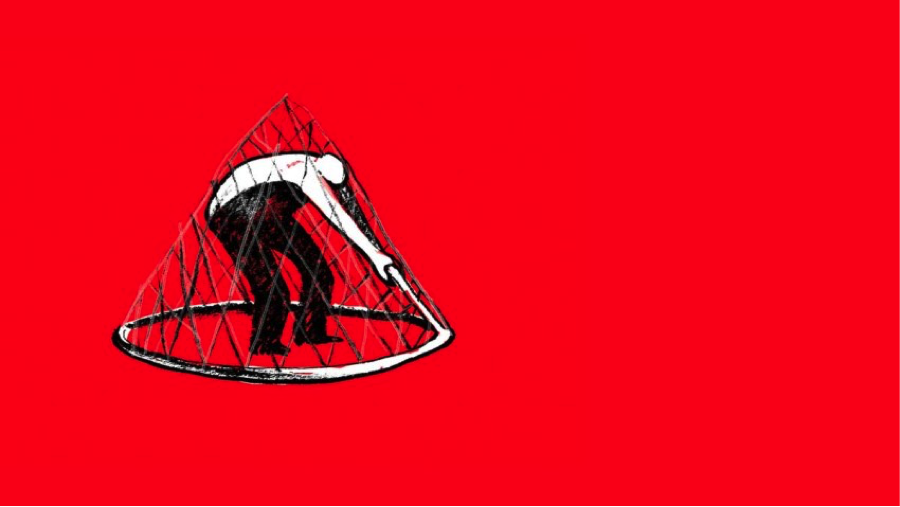
Twenty-three years ago, one of my employees — I’ll call him Dale — asked for a private meeting. Dale was serious and bookish and had very strong opinions. His work was fastidious. He rarely socialized with colleagues, but he was impeccable in his commitments to others. And he was skilled at his job.
As I closed the door to our huddle room, he came straight to the point, “Joseph, I’d like to offer you some feedback.”
I had expected a different agenda. But given my professions about candor in our culture, I was somewhat trapped. “Please do,” I said cautiously.
“Joseph, you are arrogant and difficult to work with. Your first inclination is to shoot down criticisms from me and others. That makes it impossible for me to do my job as an editor.” And with that, he was done. He looked at me calmly.
I compressed an hour’s worth of emotions and thoughts into mere seconds. I felt waves of shame, resentment, and anger. In my mind, I made a frenzied inventory of Dale’s defects — as though assembling a case to rebut an aggressive prosecutor. I fantasized briefly about firing him. My chest felt tight. My breathing was shallow. Through it all, I did my best to fake a composure I clearly did not feel. My tacit logic was that confessing hurt would telegraph weakness.
An overwhelming majority of the bad decisions I’ve made in my life were impulsive. They weren’t errors of faulty logic or ineffective deliberation. They were avoidable mistakes in moments when I was unwilling or unable to manage potent negative emotions. Likewise, the most consequential progress I’ve made in my development as a leader has been not in professional but in emotional competence.
The career-limiting habits I entered my profession with were a direct result of my inability to deal with emotions like anxiety, embarrassment, and fear. For example, I routinely procrastinated on tasks that provoked anxiety and a lack of confidence. I reacted defensively when embarrassed by criticism. And I struggled to speak up when my views were at odds with powerful colleagues.
The ability to recognize, own, and shape your own emotions is the master skill for deepening intimacy with loved ones, magnifying influence in the workplace, and amplifying our ability to turn ideas into results. My successes and failures have turned on this master skill more than any other.
But can you strengthen this core muscle of your emotional anatomy? If your impulses tend to override your intentions in cherished areas of life, is it possible to make the converse the norm?
Four practices have made an immense difference for me at important moments in my career, like this one when I faced “Dale.”
Own the emotion. Emotional responsibility is the precondition of emotional influence. You can’t change an emotion you don’t own. The first thing I do when struck by an overpowering feeling or impulse is to accept responsibility for its existence. My mental script is, “This is about me, not about that or them.” Emotions come prepackaged with tacit external attribution. Because an external event always precedes my experience of an emotion, it’s easy to assume that event caused it. But as long as I believe it was externally caused I am doomed to be a victim to my emotions.
For example, my anger following Dale’s criticism had nothing to do with Dale’s criticism. His statement could have corresponded to feelings of curiosity, surprise, or compassion as much as resentment and anger. The fact that I experienced the latter rather than the former was about me, not him.
Name the story. Next, you need to reflect on how you colluded with the initial event to create the present emotion. Emotions are the result of both what happens, and of the story you tell yourself about what happened. One of the powerful practices that helps me detach from and take control of my emotions is to name the stories I tell. Is it a victim story — one that emphasizes my virtues and absolves me of responsibility for what is happening? Is it a villain story — one that exaggerates the faults of others and attributes what’s happening to their evil motives? Is it a helpless story — one that convinces me that any healthy course of action (like listening humbly, speaking up honestly) is pointless? Naming my stories helps me see them for what they are — only one of myriad ways I can make sense of what’s happening. As I sat with Dale, I realized I was deep in victim and villain stories. I was thinking only of reasons he was wrong but not of how he was right — and I was attributing his criticism to his personal flaws, not his legitimate frustrations.
Challenge the story. Once you identify the story, you can take control by asking yourself questions that provoke you out of your victim, villain, and helpless stories. For example, I transform myself from a victim into an actor by asking, “What am I pretending not to know about my role in this situation?” I transform Dale from a villain into a human by asking, “Why would a reasonable, rational, and decent person say this?” and I transform myself from helpless into able by asking, “What’s the right thing to do now to move toward what I really want?”
As I pondered these questions in my interaction with Dale, I saw how my impatience and… gulp… arrogance, was a big part of why he was saying this. As I asked, “What is the right thing to do…” I felt an immediate release from resentment and anger. A calming humility emerged. And, I began to ask questions rather than present my defense.
Find your primal story. Over the years, I’ve wondered why the stories I tell myself are so predictable. In my research with hundreds of leaders, I’ve found that most people have habitual stories they tell in predictable circumstances as well. Early life experiences that we perceived at the time to be threats to our safety and worth become encoded in our potent memories.
For example, perhaps a classmate in second grade coaxed you to an unsupervised place in the schoolyard and bullied you in a traumatic way. A parent may have shown you less approval than a sibling. From these experiences, the most primal part of our brains code certain conditions as threatening — physically or psychically. And from that point forward, you don’t get to vote on whether you’ll react when those conditions are present. When a larger work colleague raises his voice, your brain might connect with the old bully experience. Or, when Dale accuses you of being arrogant, your parental criticism triggers flare. I’ve found greater peace over the years as I’ve become aware of the primal origin of the stories I tell — and learned to challenge the perception that my safety and worth are at risk in these moments. When my chest got tight sitting across from Dale, simply thinking, “This can’t hurt me” and “Humility is strength not weakness” had an immediate calming effect. Reciting a specific script in moments of emotional provocation weakens trauma-induced reaction that is not relevant in the present moment.
Dale and I worked together productively for years after this episode. I’ve failed as many of these moments as I’ve mastered — but by working intentionally on these simple exercises, my successes are far more common.

Joseph Grenny is a four-time New York Times bestselling author, keynote speaker, and leading social scientist for business performance. His work has been translated into 28 languages, is available in 36 countries, and has generated results for 300 of the Fortune 500. He is the cofounder of VitalSmarts, an innovator in corporate training and leadership development.

by KATE MURPHY, nytimes.com JAN. 7, 2017
We live in a culture that celebrates individualism and self-reliance, and yet we humans are an exquisitely social species, thriving in good company and suffering in isolation. More than anything else, our intimate relationships, or lack thereof, shape and define our lives.
While there have been many schools of thought to help us understand what strains and maintains human bonds, from Freudian to Gestalt, one of the most rigorously studied may be the least known to the public.
It’s called attachment theory, and there’s growing consensus about its capacity to explain and improve how we function in relationships.
Conceived more than 50 years ago by the British psychoanalyst John Bowlby and scientifically validated by an American developmental psychologist, Mary S. Ainsworth, attachment theory is now having a breakout moment, applied everywhere from inner-city preschools to executive coaching programs. Experts in the fields of psychology, neuroscience, sociology and education say the theory’s underlying assumption — that the quality of our early attachments profoundly influences how we behave as adults — has special resonance in an era when people seem more attached to their smartphones than to one another.
By the end of our first year, we have stamped on our baby brains a pretty indelible template of how we think relationships work, based on how our parents or other primary caregivers treat us. From an evolutionary standpoint, this makes sense, because we need to figure out early on how to survive in our immediate environment.
“If you’re securely attached, that’s great, because you have the expectation that if you are distressed you will be able to turn to someone for help and feel you can be there for others,” said Miriam Steele, the co-director of the Center for Attachment Research at the New School for Social Research in New York.
It’s not so great if you are one of the 40 percent to 50 percent of babies who, a meta-analysis of research indicates, are insecurely attached because their early experiences were suboptimal (their caregivers were distracted, overbearing, dismissive, unreliable, absent or perhaps threatening). “Then you have to earn your security,” Dr. Steele said, by later forming secure attachments that help you override your flawed internal working model.
Given that the divorce rate is also 40 percent to 50 percent, it would seem that this is not an easy task. Indeed, researchers said, people who have insecure attachment models tend to be drawn to those who fit their expectations, even if they are treated badly. They may subconsciously act in ways that elicit insensitive, unreliable or abusive behavior, whatever is most familiar. Or they may flee secure attachments because they feel unfamiliar.
“Our attachment system preferentially sees things according to what has happened in the past,” said Dr. Amir Levine, a psychiatrist at Columbia University and the co-author of the book “Attached,” which explores how attachment behaviors affect the neurochemistry of the brain. “It’s kind of like searching in Google where it fills in based on what you searched before.”
But again, history is not necessarily destiny. Intervention programs at the New School and the University of Delaware are having marked success helping at-risk groups like teenage mothers change their attachment behaviors (often passed down through generations) and establish more secure relationships. Another attachment-based intervention strategy called Circle of Security, which has 19,000 trained facilitators in 20 countries, has also proved effective.
What these protocols have in common is promoting participants’ awareness of their attachment style, and their related sabotaging behaviors, as well as training on how to balance vulnerability and autonomy in relationships.
One reason attachment theory has “gained so much traction lately is its ideas and observations are so resonant with our daily lives,” said Kenneth Levy, an associate professor of psychology at Pennsylvania State University who researches attachment-oriented psychotherapy.
Indeed, if you look at the classic categories of attachment styles — secure; insecure anxious; insecure avoidant; and insecure disorganized — it’s pretty easy to figure out which one applies to you and others in your life. The categories stem from tens of thousands of observations of babies and toddlers whose caregivers leave them briefly, either alone or with a stranger, and then return, a test known as the “strange situation.” The labels can also apply to how adults behave toward loved ones in times of stress.
Secure children get upset when their caregivers leave, and run toward them with outstretched arms when they return. They fold into the caregiver and are quickly soothed. A securely attached adult similarly goes to a loved one for comfort and support when they, say, are passed over for a promotion at work or feel vulnerable or hurt. They are also eager to reciprocate when the tables are turned.
Children high on the insecure anxious end of the spectrum get upset when caregivers leave and may go to them when they return. But these children aren’t easily soothed, usually because the caregiver has proved to be an unreliable source of comfort in the past. They may kick and arch their back as if they are angry. As adults, they tend to obsess about their relationships and may be overly dramatic in order to get attention. They may hound romantic interests instead of taking it slow.
Insecure avoidant children don’t register distress when their caregivers leave (although their stress hormones and heart rate may be sky high) and they don’t show much interest when caregivers return, because they are used to being ignored or rebuffed. Alternatively, a parent may have smothered them with too much attention. Insecure avoidant adults tend to have trouble with intimacy and are more likely to leave relationships, particularly if they are going well. They may not return calls and resist talking about their feelings.
Finally, insecure disorganized children and adults display both anxious and avoidant behaviors in an illogical and erratic manner. This behavior is usually the lingering result of situations where a childhood caregiver was threatening or abusive.
Tools to determine your dominant attachment style include the Adult Attachment Interview, which is meant to be administered by a clinician, or self-report questionnaires like the Attachment Styles and Close Relationships Survey. But critics said their accuracy depends on the skill and training of the interviewer in the case of the former and the self-awareness of the test taker in the latter, which perhaps explains why you can take both tests and end up in different categories.
“It can also be possible that people should be viewed as along a continuum in all categories,” said Glenn I. Roisman, the director of the Relationships Research Lab at the University of Minnesota in Minneapolis.
It’s worth noting that just as people in the insecure categories can become more secure when they form close relationships with secure people, secure people can become less so if paired with people who are insecure. “You need social context to sustain your sense of security,” said Peter Fonagy, a professor of psychoanalysis at University College London.
He added that having secure attachments is not about being a perfect parent or partner but about maintaining communication to repair the inevitable rifts that occur. In the daily battering of any relationship, Dr. Fonagy said, “if free flow of communication is impaired, the relationship is, too.”
Kate Murphy is a journalist in Houston who writes frequently for The New York Times.
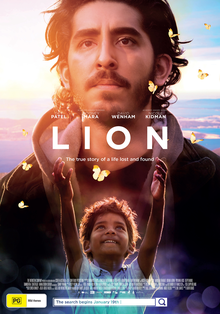 Movie recommendation
Movie recommendationFor anyone who hasn’t already seen it, I highly recommend this movie. It tells the extraordinary true story of a little 5-year-old boy, Saroo, who becomes lost in Calcutta, 2000km from his home in central India. After months of surviving on the streets, then in an orphanage that is essentially a warehouse for lost children, Saroo is adopted by an Australian couple whose world couldn’t be more different from the one he leaves behind.
One of the many strengths of Lion is how this movie avoids the trap of stereotypes; little Saroo is extremely vulnerable, yet smart and resourceful. Poverty is not just one-dimensional, it’s full of life.
At the heart of the movie is a deep understanding and insightful approach to the experience of childhood trauma. Saroo’s story moves from pain and fear to hope and healing without sentimentality.
Overcoming trauma is a journey of the soul that is rarely captured on film. For anyone who has made this journey themselves, or is somewhere along their path, Lion is a portrait in healing, courage and love that will inspire and affirm.
By KATE MURPHY
July 25, 2014
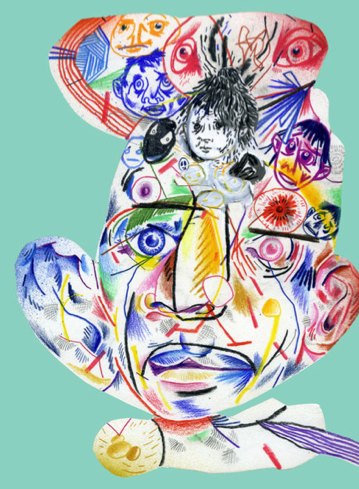
ONE of the biggest complaints in modern society is being overscheduled, overcommitted and overextended. Ask people at a social gathering how they are and the stock answer is “super busy,” “crazy busy” or “insanely busy.” Nobody is just “fine” anymore.
When people aren’t super busy at work, they are crazy busy exercising, entertaining or taking their kids to Chinese lessons. Or maybe they are insanely busy playing fantasy football, tracing their genealogy or churning their own butter.
And if there is ever a still moment for reflective thought — say, while waiting in line at the grocery store or sitting in traffic — out comes the mobile device. So it’s worth noting a study published last month in the journal Science, which shows how far people will go to avoid introspection.
“We had noted how wedded to our devices we all seem to be and that people seem to find any excuse they can to keep busy,” said Timothy Wilson, a psychology professor at the University of Virginia and lead author of the study. “No one had done a simple study letting people go off on their own and think.”
The results surprised him and have created a stir in the psychology and neuroscience communities. In 11 experiments involving more than 700 people, the majority of participants reported that they found it unpleasant to be alone in a room with their thoughts for just 6 to 15 minutes.
Moreover, in one experiment, 64 percent of men and 15 percent of women began self-administering electric shocks when left alone to think. These same people, by the way, had previously said they would pay money to avoid receiving the painful jolt.
It didn’t matter if the subjects engaged in the contemplative exercise at home or in the laboratory, or if they were given suggestions of what to think about, like a coming vacation; they just didn’t like being in their own heads.
It could be because human beings, when left alone, tend to dwell on what’s wrong in their lives. We have evolved to become problem solvers and meaning makers. What preys on our minds, when we aren’t updating our Facebook page or in spinning class, are the things we haven’t figured out — difficult relationships, personal and professional failures, money trouble, health concerns and so on. And until there is resolution, or at least some kind of understanding or acceptance, these thoughts reverberate in our heads. Hello rumination. Hello insomnia.
“One explanation why people keep themselves so busy and would rather shock themselves is that they are trying to avoid that kind of negative stuff,” said Ethan Kross, director of the Emotion and Self-Control Laboratory at the University of Michigan. “It doesn’t feel good if you’re not intrinsically good at reflecting.”
The comedian Louis C.K. has a riff that’s been watched nearly eight million times on YouTube in which he describes that not-good feeling. “Sometimes when things clear away and you’re not watching anything and you’re in your car and you start going, oh no, here it comes, that I’m alone, and it starts to visit on you, just this sadness,” he said. “And that’s why we text and drive. People are willing to risk taking a life and ruining their own because they don’t want to be alone for a second because it’s so hard.”
But you can’t solve or let go of problems if you don’t allow yourself time to think about them. It’s an imperative ignored by our culture, which values doing more than thinking and believes answers are in the palm of your hand rather than in your own head.
“It’s like we’re all in this addicted family where all this busyness seems normal when it’s really harmful,” said Stephanie Brown, a psychologist in Silicon Valley and the author of “Speed: Facing Our Addiction to Fast and Faster — and Overcoming Our Fear of Slowing Down.” “There’s this widespread belief that thinking and feeling will only slow you down and get in your way, but it’s the opposite.”
Suppressing negative feelings only gives them more power, she said, leading to intrusive thoughts, which makes people get even busier to keep them at bay. The constant cognitive strain of evading emotions underlies a range of psychological troubles such as obsessive-compulsive disorder, anxiety, depression and panic attacks, not to mention a range of addictions. It is also associated with various somatic problems like eczema, irritable bowel syndrome, asthma, inflammation, impaired immunity and headaches.
Studies further suggest that not giving yourself time to reflect impairs your ability to empathize with others. “The more in touch with my own feelings and experiences, the richer and more accurate are my guesses of what passes through another person’s mind,” said Giancarlo Dimaggio, a psychiatrist with the Center for Metacognitive Interpersonal Therapy in Rome, who studies the interplay of self-reflection and empathy. “Feeling what you feel is an ability that atrophies if you don’t use it.”
Researchers have also found that an idle mind is a crucible of creativity. A number of studies have shown that people tend to come up with more novel uses for objects if they are first given an easy task that allows their minds to wander, rather than a more demanding one.
“Idle mental processing encourages creativity and solutions because imagining your problem when you aren’t in it is not the same as reality,” said Jonathan Smallwood, a cognitive neuroscientist at the University of York, in England. “Using your imagination means you are in fact rethinking the problem in a novel way.”
Perhaps that’s why Google offers its employees courses called “Search Inside Yourself” and “Neural Self-Hacking,” which include instruction on mindfulness meditation, where the goal is to recognize and accept inner thoughts and feelings rather than ignore or repress them. It’s in the company’s interest because it frees up employees’ otherwise embattled brain space to intuit end users’ desires and create products to satisfy them.
“I have a lot of people who come in and want to learn meditation to shut out thoughts that come up in those quiet moments,” said Sarah Griesemer, a psychologist in Austin, Tex., who incorporates mindfulness meditation into her practice. “But allowing and tolerating the drifting in of thoughts is part of the process.” Her patients, mostly hard-charging professionals, report being more productive at work and more energetic and engaged parents.
To get rid of the emotional static, experts advise not using first-person pronouns when thinking about troubling events in your life. Instead, use third-person pronouns or your own name when thinking about yourself. “If a friend comes to you with a problem it’s easy to coach them through it, but if the problem is happening to us we have real difficulty, in part because we have all these egocentric biases making it hard to reason rationally,” said Dr. Kross of Michigan. “The data clearly shows that you can use language to almost trick yourself into thinking your problems are happening to someone else.”
Hard as they sometimes are, negative feelings are a part of everyone’s life, arguably more so if you are crazy busy. But it’s those same deep and troubling feelings, and how you deal with them, that make you the person you are. While busyness may stanch welling sadness, it may also limit your ability to be overcome with joy.
I’ve been enthusiastically recommending All the Single Ladies since I read it last spring.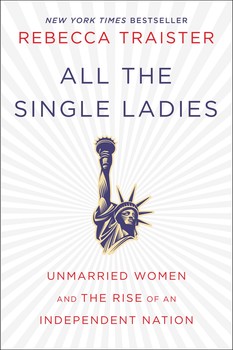
Author Rebecca Traister has put together a fascinating depth of historic and social research, a richly satisfying diversity of first person interviews, and a warmth and humour in her writing that makes this book a real pleasure to read. I enjoyed it so much that I turned from the last page right back to the first page and read the whole thing a second time – something I haven’t done for years.
In particular, the impact of reading this book for women who are single by choice or circumstances can be deeply emotional and transformative; both clients and friends talk about feeling seen, validated and empowered in ways that our culture (and even psychotherapy at times) too often denies.
PRAISE FOR ALL THE SINGLE LADIES
“A well-researched, deeply informative examination of women’s bids for independence, spanning centuries…Traister provides a thoughtful culling of history to help bridge the gap between, on the one hand, glib depictions of single womanhood largely focused on sexual escapades and, on the other, grave warnings that female independence will unravel the very fabric of the country… All The Single Ladies is arriving just in time. This is an informative and thought-provoking book for anyone – not just the single ladies – who wants to gain a great understanding of this pivotal moment in the history of the United States.” —New York Times Book Review (Editor’s Choice)
“The enormous accomplishment of Traister’s book is to show that the ranks of women electing for nontraditional lives…have also improved the lots of women who make traditional choices, blowing open the institutions of marriage and parenthood…This rich portrait of our most quietly explosive social force makes it clear that the ladies still have plenty of work to do.” —Slate
“Personal and relatable…[Traister’s] assessment of single women’s sex lives is so balanced and ordinary-sounding that it becomes extraordinary in a world where Tinder is supposedly bringing a dating apocalypse…I’ll swipe right on that message any day.” —Washington Post
“I can’t begin to count the number of conversations I’ve had in my adult life about my lack of enthusiasm to marry… Thankfully, with the publication of Rebecca Traister’s All the Single Ladies: Unmarried Women and the Rise of an Independent Nation, I can stop explaining and buy her book for all the busybodies in my happily unmarried life. Traister blends history, reportage and personal memoir to propose that the notion of marriage in American life has been and will be written by unmarried women.” —The Guardian (US)
“Traister’s illuminating history of women who haven’t put a ring on it, whether by choice or by chance, is smartly placed in a larger historical context and enriched by compelling personal narratives.” —Entertainment Weekly, Best Books of 2016 So Far select
“Traister is one of the sharpest journalists writing about feminism today, and her look into the link between eras with large numbers of unmarried women and periods of drastic social change is absolutely riveting… It turns out the history of unmarried women in this country is a fascinating one, which Traister recounts in compulsively readable detail, combining facts with personal stories from single ladies across racial and financial spectrums. What’s left after she joyfully dismantles conservative arguments about the death of wifely servitude is hope: ‘Ring on it’ or not, the paths open to women today are varied and bright.” —Entertainment Weekly
“In this intelligent book, Traister looks at the many reasons for choosing a path that would have been cultural and economic suicide 50 years ago. She wants single women to recognize themselves as a political force and to celebrate unmarried life for what it can be: an excellent option.” —People Magazine
“Wonderfully inclusive, examining single women from all walks of life — working, middle, and upper-class women; women of color and white women; queer and straight ones…With All the Single Ladies, [Traister] brings her trademark intelligence and wit to bear, interspersing her own experiences and observations with dozens of interviews with women all over the country, plus historical context, from so-called Boston marriages (the nineteenth-century name for women who lived together) and the Brontë sisters to Murphy Brown and Sex and the City.” —Elle Magazine
“No husband, NP…In All The Single Ladies, an exhaustive examination of independent women and how they shaped the world we live (and date) in today, Rebecca Traister explodes the centuries-old notion that marriage is compulsory to living a happy, fulfilled life and reveals the inestimable power of being blissfully unattached.” —Cosmopolitan
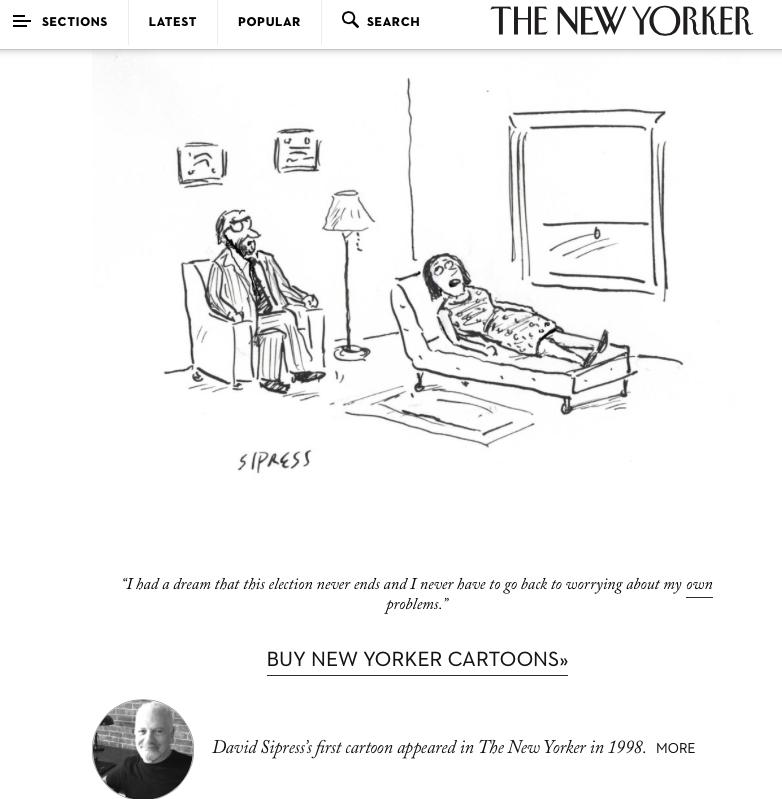
Finally, last year, out of the sea of blogs, books, podcasts, and scientific studies about modern love, a smart, positive and honest book about dating and the search for relationships has emerged from a source I didn’t expect: Aziz Ansari. In Modern Romance: An Investigation, Ansari has teamed up with NYU sociologist, Eric Klinenberg to put together the results of their huge research project that collected data from around the world. The result is a very readable book that combines excellent social science with irreverent humor to give us a comprehensive and compassionate tour of the new romantic world.
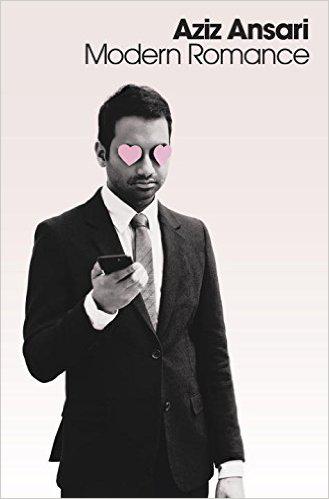 Reading this book was a pleasure as well as an education in this landscape, and something I’m very happy to recommend to clients. It starts with highlighting the dramatic social change: that in just two decades, people suddenly have more romantic options than at any time in human history. Social media, smartphones and online dating have made the ability to connect with these options incredibly easy. The result is that people can struggle with pretty intense anxiety in the face of overwhelming options for their hope of finding someone with whom they can share a deep connection.
Reading this book was a pleasure as well as an education in this landscape, and something I’m very happy to recommend to clients. It starts with highlighting the dramatic social change: that in just two decades, people suddenly have more romantic options than at any time in human history. Social media, smartphones and online dating have made the ability to connect with these options incredibly easy. The result is that people can struggle with pretty intense anxiety in the face of overwhelming options for their hope of finding someone with whom they can share a deep connection.
From my clients who’ve read/listened to it, the feedback has been unanimously positive (‘surprisingly confidence building’ is a consistent response). It’s opened up meaningful avenues of exploring the search for relationship as well as, for clients in relationships, coming to a deeper understanding of committed love.
Contact me for help with relationships
You must be logged in to post a comment.